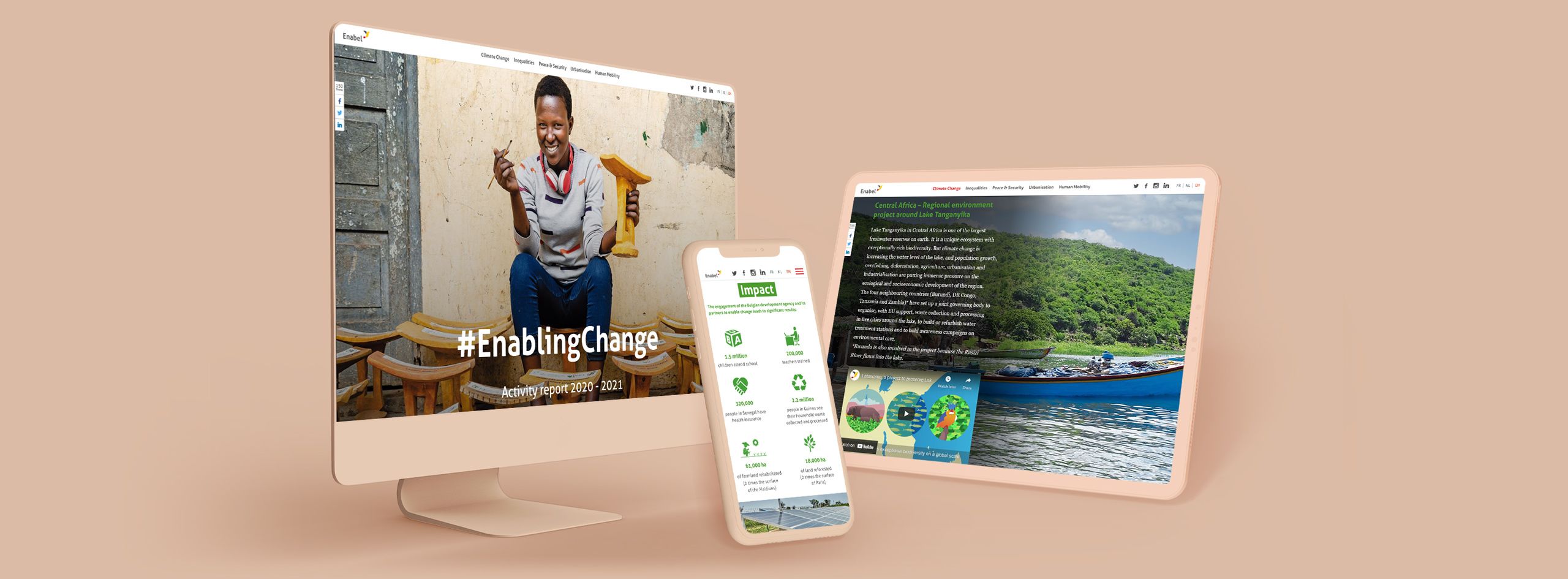An introduction to nonprofit storytelling

An introduction to nonprofit storytelling

Nonprofits tackle some of the world's toughest problems. But they don't do it alone: nonprofit supporters make a critical difference by donating, mobilising, and helping to spread the word.
In this guide to nonprofit storytelling, we show how storytelling can be used to forge stronger relationships with your supporters, in order to produce better outcomes for your nonprofit. We'll also discuss how nonprofits can make the most of modern digital storytelling platforms to create immersive visual stories.
Here's what we'll cover:
Start creating with Shorthand
It's the fastest way to publish beautifully engaging stories, reports, internal comms, and more.
What is nonprofit storytelling?

Nonprofit storytelling refers to stories — often involving real people or situations — told by nonprofits to advance a particular cause.
Storytelling is a marketing tactic that the nonprofit sector uses to create emotional connections with their audience. This, in turn, makes their audience more likely to take action, such as donate, volunteer, or spread the word.
Nonprofit storytelling takes a wide variety of forms, including:
- Short-form social media posts
- Video ads on television or social media.
- Marketing collateral
- Case studies
- Long-form stories and guides
- Conferences and events
- Annual reports and impact reports (check out our list of ten examples of digital stories to inspire your next annual report)
- Awareness campaigns
- Fundraising campaigns
Learn more about which content types you should prioritise in our guide to Content strategy for nonprofits.
While some of these stories will be told in print or in person, an increasing share of them will be created as digital stories.
That begs the question: what is digital storytelling?
What is digital storytelling?

Digital storytelling is an umbrella term for immersive, interactive content published to the web.
Many digital stories use techniques like scroll-based animation, rich media, and parallax scrolling to earn and keep the attention of the reader.
For example, check out this impact report from Enabel, the development arm of the Belgian government. The report uses embedded interactives, data visualisation, and — yes — excellent storytelling to showcase their impact on the world.
Pioneered by media brands like The New York Times and the BBC, digital storytelling is now used by content teams across every industry, from higher education to professional sports.
Some digital stories are built by teams of developers and web designers, while others are made using no-code (or code-optional) platforms, such as Shorthand.
If you're looking for more examples of stunning digital stories, sign up for Shorthand's newsletter to get the best digital stories on the web in your inbox.
Why is nonprofit storytelling important?

Storytelling is a powerful tool for create an emotional connection between the cause of your nonprofit organisation and your audience.
Too often, nonprofit marketing relies on policy-speak — the legacy of too many meetings with government and corporate officials — or desperate appeals for funding. The fact is, neither of these approaches work particularly well.
Policy-speak typically lacks emotional appeal, and is too easy to ignore. On the other end of the spectrum, desperate appeals for funding are too emotional, and don't convey the sense of competence — i.e. the sense that your nonprofit can do anything about the issue — that you need for successful campaigns.
Storytelling lands in the middle of these two extremes. Good stories will more effectively — and subtly — communicate why your nonprofit exists, what it does, and where exactly any contribution of time or money will go. Done well, these stories will have a significant impact on the metrics you're tracking.
Want to learn more about nonprofit marketing? Check out our guide to digital marketing for nonprofits.
9 tips for nonprofit storytelling

1. Tell stories about real people
Effective storytelling is built on the personal stories of real people. Even if your nonprofit is focused on causes like the environment or public policy, try to find people to build your narrative around.
2. Use emotion (carefully)
It's true: A compelling story will often include a plea to the emotions of the audience. Many nonprofits work to fight injustice in the world, and are quick to tell stories that will pluck heartstrings. But try to follow the number #1 rule of storytelling: show, don't tell. This means that you should let your story do its work, without overtly blunt emotional appeals.
3. Repurpose your content
Don't let a good story go to waste. If you have content that works, repurpose it for all your channels, including video, audio, visual storytelling, and social media.
4. Embrace visual storytelling
Over the last decade, the quality of storytelling on the web has increased exponentially. With the rise of digital storytelling platforms, we're increasingly seeing highly visual and immersive stories. This helps nonprofit stories stand out from the crowd and compete with the best content on the web.
5. Use multimedia assets
As web browsers get more powerful and internet speeds get faster, great stories on the web are increasingly multimedia. To tell multimedia stories, though, you need to build the creation of media assets in from the beginning of your content process.
6. Don't be afraid of longform
We all know the cliche: people these days have the attention spans of puppies. But the reality is, most of us have great attention spans — but only for the right content. If you have a long story to tell with visual assets, then don't be afraid to tell that story. As we've written in our guide to longform journalism, great longform stories will likely be among the best performing content you produce. If you want to get started with longform, check out our guide to creating longform content.
7. Build stories into your marketing strategy
Like any other marketing tactic, you should use stories as part of a broader marketing strategy. Plan ahead, and ensure that your stories — like the rest of your marketing content — adheres to your messaging and brand guidelines.
8. Develop a pipeline for new stories
As part of your content strategy, develop a process for sourcing new stories. This may involve collaborating with nonprofit professionals in the field, and empowering them to find people for your team to interview.
9. Tie everything to your organisation's story
Nonprofit storytelling is, ultimately, an exercise in branding for your nonprofit. As your audience engages in the stories you tell, they will get a strong sense of your own values and your own story. Like so much else in nonprofit storytelling, this will come down to careful strategic planning.
4 examples of nonprofit storytelling

CAFOD
The success of a fundraising campaign boils down to how effectively the cause is communicated. Does your fundraiser inspire hope and capture attention? Does it demonstrate how your work is important, and how your supporters' donations can help achieve your goals?
Does the presentation compel readers to share your message well beyond the bounds of your existing supporters?
To raise money for drought-stricken Uganda, The Catholic Agency for Overseas Development (CAFOD) produced this unique, eye-catching campaign.
The story begins with an illustrated first-person story that reads almost like a graphic novel. When the illustrations slowly morph into real photographs, it becomes clear that this isn't an abstract story about violence and access to water — it's someone's reality.
After the emotional introduction, CAFOD uses data to explain the issue, and provide concrete examples of the positive impact of different donation levels — empowering information for readers and potential donors.
Habitat for Humanity
The world’s leading non-profits are building immersive annual reports — turning an obligation into an opportunity.
These reports are building on techniques used by media brands like Sky, BBC, and NBC News to keep the readers' attention.
One great example comes from Habitat for Humanity, a nonprofit organisation that relies heavily on fundraising and volunteers. Their mission is to help build better housing around the world — something that’s clear from the start of the report, which opens with a video of their projects in action and a quote from a volunteer.
Their report also stands out for its structure. Instead of starting with information about the organisation, each section of the report tells the story of someone who has worked with or benefited from the non-profit, with each story then linked to a specific goal or programme.
World Vision
Another great annual report comes from World Vision, a non-profit focused on children’s wellbeing around the world.
In its report 'Our Progress', World Vision achieve a strong sense of brand identity, held together with World Vision’s signature colour scheme of orange and black.
World Vision want to focus on the children they help, so the report is illustrated with photos of kids and is very easy to read. Wherever possible, they let the people helped by World Vision speak for themselves through quotes and testimonials.
For more examples and advice on creating annual reports using Shorthand, check out our guide, How to write an annual report.
United Nations Development Programme
Championing personal responsibility and encouraging readers to think more critically about their own actions is the aim of many nonprofits. Perhaps you want people to recycle more, or use less electricity and water. For promoting awareness and stewardship, it's important to express urgency, but also leave room for hope. Visual storytelling can help you achieve this delicate emotional balance.
When it comes to environmental degradation, nothing is quite as impactful as visuals. In the United Nations Development Programme's (UNDP) story A Tidal Wave of Plastic, the photos of plastic speak for themselves. By giving outsize attention to photos and maps of plastic in our waters, readers come to understand the scale of the problem.
The UNDP effectively communicates the gravity of the situation using multimedia and interactive infographics. But the story ends on a positive note — it highlights the progress that organisations and governments have made to tackle plastic pollution, and provides a set of directives to the reader. An appeal to emotion, as made in this story, can compel audiences to reflect on their personal impact, to become aware of how individual action can make a difference, and to ultimately make choices that better the world.
These are a just a few examples of nonprofits that successfully use storytelling Shorthand to craft compelling visual narratives. Check out 8 inspiring examples of donor impact reports for more.
For more storytelling inspiration, be sure to sign up for The Craft's newsletter.





